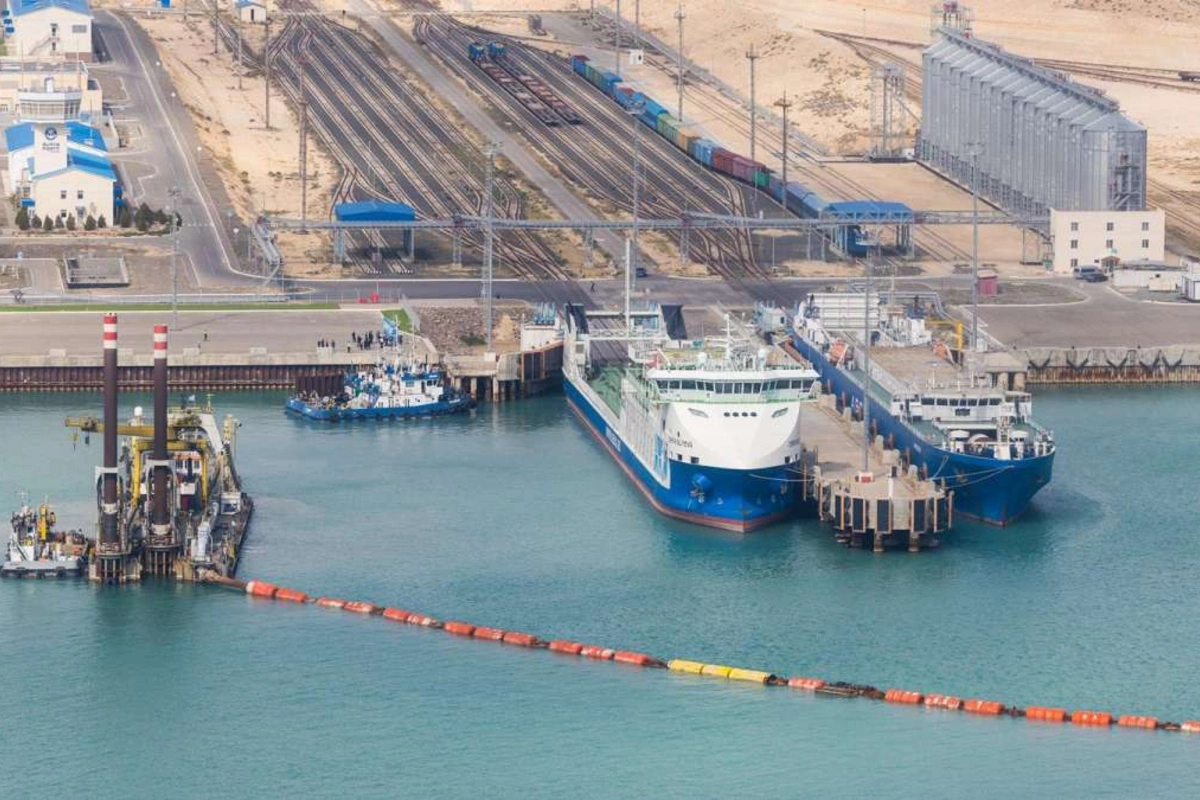
In recent years, Kazakhstan has been actively advancing transport and logistics projects, aiming to establish itself as a key transit hub on the Eurasian continent. One of the most promising initiatives in this area is the Trans-Caspian route.
In Astana, the 30th session of the Foreign Investors Council under the President of Kazakhstan took place, an event held annually since 1998. Kazakhstan has set ambitious goals, aiming to attract $150 billion in foreign investments by 2029, including into its transport and logistics sectors. This year also marks a milestone for Kazakhstan, as 2029 is when President Tokayev's term, limited to a single term by recent constitutional amendments, will conclude.
Many of the country's economic plans are targeted within this period, such as the goal to double Kazakhstan’s GDP to $450 billion by 2029. The president emphasized that Kazakhstan aims to strengthen its position as a key transit hub on the Eurasian continent, with the Trans-Caspian route, or Middle Corridor, playing an essential role in this process. To support this goal, Kazakhstan plans to modernize 11,000 kilometers of outdated railroads and build over 5,000 kilometers of new rail lines.
While the Caspian route currently encompasses both road and rail networks, there are critical "bottlenecks" requiring upgrades, additional tracks, and electrification to minimize delays. New freight terminals and transport vessels are also needed, given the limited capacity on the Caspian Sea. Current cargo volumes reach around 10 million tons, with plans to multiply this figure in the coming years.
The Trans-Caspian route is vital to Kazakhstan's vision of establishing itself as Eurasia's transit hub, though it is not the only pathway. The broader Eurasian transport network, including the North-South corridor promoted by Russia and supported by Kazakhstan and Azerbaijan, presents a complementary framework. This corridor offers two routes: one through Azerbaijan and another via Kazakhstan and Turkmenistan.
The integration of these transport corridors allows for flexible cargo distribution, enhancing the competitiveness of land routes. For instance, shipments from China can transit through Kazakhstan, cross the Caspian, pass through Azerbaijan to Europe, or pivot southward via Turkmenistan to the Persian Gulf and Indian Ocean. Such connectivity encourages flexibility and expands the transport network.
The Trans-Caspian route has been coordinated for over a decade; in 2014, the International Association for its development was established, commencing operations in 2017 with headquarters in Astana. This long-term project envisions sustainable growth and strategic development.
Claiming the Trans-Caspian route could replace maritime shipping would be overly optimistic, if not exaggerated. However, it certainly has a viable niche in international freight transport due to certain advantages over maritime routes—such as faster delivery times, door-to-door options, and greater stability. In today’s geopolitical turbulence, Kazakhstan and Azerbaijan are demonstrating robust growth in their political and economic systems, earning the confidence of foreign investors. This interest extends to the Trans-Caspian route, which is actively discussed with European partners. Negotiations are underway for a potential $10 billion investment in its development, highlighting international interest in the project, even as current conditions and prospects remain unclear.
Kazakhstan and Azerbaijan gain access to new markets, aiding economic diversification, GDP growth, and the creation of new business opportunities. The strategic role of the Trans-Caspian route is consistently underscored at the highest levels, including in the annual presidential address to the people of Kazakhstan. The topic receives attention on international platforms and during presidential visits, with promising prospects for the route. Currently, transport volumes are increasing, and delivery times are shortening. By 2029, the goal is to achieve an annual cargo turnover of 10 million tons, a substantial increase from 1.5 million tons in 2022 and 2.5 million tons in 2023. Delivery times have also significantly improved, from 53 days initially to 20 days, with plans to further reduce this to 10-15 days for full routes from China’s interior regions.
The route often starts in the Chinese city of Xi’an, though its total length varies depending on the final destination—whether the Black Sea, Mediterranean, etc. Speed and stability remain the primary factors. In Almaty, for example, an extensive rail bypass is being constructed, which will ease congestion in the Almaty hub and speed up transit times by allowing freight to bypass the city.
Of course, much depends on China’s capacity to sustain its export flows. One of the challenges for the Trans-Caspian route is ensuring return cargo loads, so containers do not return empty—a critical factor for the project’s competitiveness.
Overall, the development of the Trans-Caspian corridor is a response to geopolitical instability and an effort to create a transport network solely focused on business and reliable deliveries, independent of peace and conflict concerns.
Share on social media